The major work of the National Council on Radiation Protection and Measurements (NCRP) is accomplished through its scientific committees. These are constituted by the Board of Directors.
Committee |
Title |
Chair |
| CC 2 | Meeting the Needs of the Nation for Radiation Protection |
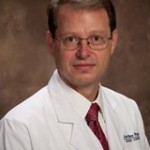
WAYNE D. NEWHAUSER is the Director of the Medical and Health Physics Program at Louisiana State University in Baton Rouge, holder of the Dr. Charles M. Smith Chair in Medical Physics, and Chief of Physics at the Mary Bird Perkins Cancer Center. He is a board certified and licensed medical physicist with specialization in advanced-technology radiotherapies. Dr. Newhauser is an expert in proton radiation therapy, dose reconstructions, and risk estimation and reduction. His current research projects seek to improve long-term outcomes of survivors of childhood and adult cancers. He and his multidisciplinary team of collaborators are known for their early use of Monte-Carlo methods and high-performance computing in proton therapy, including neutron shielding, treatment planning, and estimation of stray radiation exposures. He received the Innovation Excellence Award in 2012 in recognition of his laboratory's research involving in-silico clinical trials to compare advanced-technology radiotherapies. Dr. Newhauser has published more than 85 peer-reviewed journal articles, leads federal research grants, and mentors graduate students and post-doctoral fellows. He has served in leadership roles in the American Association of Physicists in Medicine, the American Nuclear Society, and the Health Physics Society. He serves on the International Advisory Board of the journal Physics In Medicine and Biology and is a corresponding member of EURODOS. After receiving a BS in nuclear engineering and MS and PhD degrees medical physics from the University of Wisconsin, he worked at the German National Standards Laboratory, Harvard Medical School and Massachusetts General Hospital, and The University of Texas MD Anderson Cancer Center. 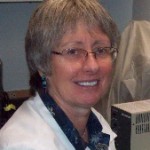
JACQUELINE P. WILLIAMS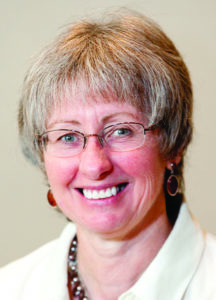
completed her undergraduate degrees at the University of Nottingham, followed by her post-doctoral training in radiation biology at St. Bartholomew's Hospital, University of London, United Kingdom. Shortly after completing her studies, she joined the faculty at the University of Rochester, New York, in the department of Radiation Oncology and, later, in the department of Environmental Medicine. Over her career, Dr. Williams has served as the President of the Radiation Research Society, the Research Chair on the Board of the American Society for Radiation Oncology, and Council Member to the International Association for Radiation Research, as well as associate editor on several radiation-related journals, including the International Journal of Radiation Biology. Although now semi-retired, Dr. Williams has accrued nearly 40 y of experience in radiation biology and related fields and has been involved in a wide range of research areas, clinically-related oncologic studies and clinical trials, tumor blood flow studies, long-term carcinogenic studies, and pharmacological and toxicological projects. In particular, her research involved identifying mechanisms that underlie the initiation and progression of radiation-induced late normal tissue effects as a consequence of accidental exposures or the low doses associated with either space travel or mass terrorism events, with the goal of developing protection and/or mitigation strategies. |
| PAC 1 | 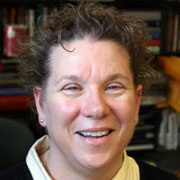
GAYLE E. WOLOSCHAK
is a Professor of Radiation Oncology and Radiology at Northwestern University Feinberg School of Medicine in Chicago and Associate Dean of the Graduate School. She and her group have been involved in studies of molecular consequences of radiation exposure, late tissue effects associated with radiation, and the use of radiation-inducible nanomaterials for cancer imaging and therapy. Dr. Woloschak also teaches radiation biology to radiation oncology and radiology residents, cardiology trainees, and graduate students and manages the Advanced Grant Writing Workshop for the Radiological Society of North America (RSNA). She earned her PhD in medical sciences from the University of Toledo (Ohio) and did post-doctoral studies in molecular biology at the Mayo Clinic. She has served on review panels for various federal agencies including the National Institutes of Health, the National Aeronautics and Space Administration, the U.S. Department of Energy, RSNA, the U.S. Army Medical Research and Materiel Command, and others. She is currently Editor-in-Chief for the International Journal of Radiation Biology, Section Editor for PLOS One, and serves on a variety of editorial boards. She is Chair of NCRP Program Area Committee 1, has served on organizational committees for several NCRP meetings, and has been involved in committees for several NCRP reports. She also served as President of the Radiation Research Society and is a member of the U.S. delegation to the United Nations Scientific Committee on the Effects of Atomic Radiation. 
Jonine L. Bernstein is an Attending Epidemiologist at the Memorial Sloan-Kettering Cancer Center (MSKCC) in New York City. Her core research focus is on breast cancer and gliomas and on understanding cancer risk and progression in order to identify those at highest risk because of gene carrier status, environmental exposures, or a combination of both. Dr. Bernstein is the Principle Investigator of the National Cancer Institute (NCI)-funded international 24-center Women's Environmental Cancer Radiation and Epidemiologic (WECARE) Study which was specifically designed to examine the interaction of radiation exposure and genetic predisposition in breast cancer, especially radiation-associated contralateral breast cancer (CBC) among 3,700 women with CBC and unilateral breast cancer. The WECARE Study has served as the source population for studies of candidate genes such as BRCA1, BRCA2, CHEK2, and ATM, candidate gene pathways of DNA damage response involved in radiation-induced double-strand break repair—ATM, CHEK2, P53 binding protein (53BPI), and MDC1, Mre11, Rad50, and Nbs1 (e.g., MRN nuclease complex), a genome-wide association study, and most recently mammographic density. The global hypothesis across these studies is that women who carry certain types of mutations will be more susceptible to breast cancer than noncarriers, and possibly to radiation-associated breast cancer. Dr. Bernstein currently serves as a member of the Board of Directors of the American College of Epidemiology, the External Advisory group for the NCI-sponsored Breast Cancer Family Registry, the National Council on Radiation Protection and Measurements, and most recently the NCI Board of Scientific Counselors-Clinical Sciences and Epidemiology. For the past two years, she has served on the Organizing Committee of the American Statistical Association Conference on Radiation and Health (2012 and 2014 meetings), and was Co-Chair of the Third North American Congress of Epidemiology, held in June 2011 for which she was honored by the 2012 ACE Award for Leadership and Service in Epidemiology. Dr. Bernstein holds a PhD in Epidemiology from Yale University, an MS in Applied Biometry from the University of Southern California, and an AB from Brown University. Before joining the faculty at MSKCC, she was Deputy Director of the Division of Epidemiology at Mount Sinai School of Medicine. |
|
| SC 1-27 | Evaluation of Sex-Specific Differences in Lung Cancer Radiation Risks and Recommendations for Use in Transfer and Projection Models | 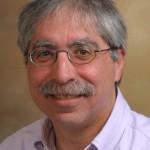
MICHAEL M. WEIL is a professor in the Department of Environmental and Radiological Health Sciences at Colorado State University (CSU). His research, which takes advantage of murine models of radiation carcinogenesis and leukemogenesis, is focused on understanding how radiation exposure can lead to cancer and why some individuals may be more susceptible than others. At CSU, Dr. Weil teaches a graduate level course in cancer genetics and lectures in courses on cancer biology, environmental carcinogenesis, principles of radiation biology, and the pathobiology of laboratory animals. Dr. Weil earned his PhD in Microbiology from the University of Texas at Austin and was trained in cancer genetics and radiation biology in the Department of Biochemistry and Molecular Biology Biochemistry and the Department of Experimental Radiotherapy at the University of Texas M.D. Anderson Cancer Center. Dr. Weil is a former Radiation Research Society council member and has served on National Institutes of Health, U.S. Department of Defense, and National Aeronautics and Space Administration grant review panels. 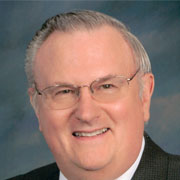
JOHN D. BOICE, JR.
is Professor of Epidemiology at Vanderbilt University School of Medicine. He is Past President of NCRP (2012 to 2018) and currently the Director of Science. After being awarded Doctor of Science in Epidemiology from Harvard University Dr. Boice went on to join the world-renowned National Cancer Institute (NCI) where he developed, and then in 1984 became the first chief of, the Radiation Epidemiology Branch. He remained in the U.S. Public Health Service (USPHS) for 27 y retiring as Captain. From 1997 to 2017, he was a member of the Main Commission of the International Commission on Radiological Protection, and for 25 y from 1993, a member of the U.S. delegation to the United Nations Scientific Committee on the Effects of Atomic Radiation. Dr. Boice has made substantial and significant contributions to our understanding of the risks posed by exposure to radiation, with over 550 publications in the scientific literature, many of them providing key elements for the scientific basis of radiological protection. He has been invited to deliver many distinguished lectures, including the Lauriston Taylor Lecture of the NCRP and the Sievert Lecture of the International Radiation Protection Association. His awards include the Harvard School of Public Health Alumni Award of Merit, the EO Lawrence Award from the U.S. Department of Energy, the Gorgas Medal from the Association of Military Surgeons of the United States, the outstanding alumnus award from the University of Texas at El Paso, the Distinguished Service Medal from the USPHS, the NCI Director's Award in 2021, and recently he was elected Honorary Fellow of the U.K. Society for Radiological Protection in 2022. The "John D Boice Jr Young Investigator Award" was established by NCRP in 2019 to recognize early career professionals. He currently serves on the Steering Committees for the Image Gently Alliance and for the Childhood Cancer Survivor Study (St. Jude). Dr. Boice has worked tirelessly to direct and advance the U.S. Million Person Study of nuclear workers and atomic test veterans, which will add significantly to our knowledge of the effects of prolonged exposure to low levels of radiation. |
| PAC 2 | 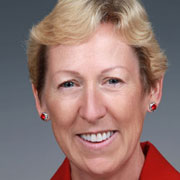
KATHRYN H. PRYOR
has been a member of Program Area Committee (PAC) 2 since 2007 and a member of NCRP since 2010. She has served on Scientific Committees 2-4, 2-5, 2-7, 2-8, 1-19, and 6-9. Ms. Pryor has served on the NCRP Board of Directors and was Scientific Vice President of PAC 2. She received her BS in Biology in 1979 and MS in Radiological Sciences in 1981, both from the University of Washington. Ms. Pryor retired from the Pacific Northwest National Laboratory (PNNL) in Richland, Washington in 2018. She was the Chief Health Physicist at PNNL, providing management and technical support to the PNNL Radiation Protection Division since 1992. She also served as the Chief Radiological Engineer for the design of the Pit Disassembly and Conversion Project. Ms. Pryor previously held radiation protection technical support positions at the San Onofre Nuclear Generating Station and the Trojan Nuclear Plant and was the Radiation Safety Officer at the University of Southern California Health Sciences Campus. Ms. Pryor is a Fellow member of the Health Physics Society (HPS) and served as President-Elect, President, and Past President from 2010 to 2013. She is certified in comprehensive practice by the American Board of Health Physics (ABHP) and served on the ABHP both as a member and Chair from 1998 to 2002. She also previously served as the President of the American Academy of Health Physics. Ms. Pryor was awarded the William McAdams Outstanding Service Award by ABHP in 2007 and the John P. Corley Meritorious Service Award by the Columbia Chapter of HPS in 2003. |
|
| SC 2-8 | Operational Radiation Safety Program — Revision to Report No. 127 (1998) | 
KATHRYN H. PRYOR
has been a member of Program Area Committee (PAC) 2 since 2007 and a member of NCRP since 2010. She has served on Scientific Committees 2-4, 2-5, 2-7, 2-8, 1-19, and 6-9. Ms. Pryor has served on the NCRP Board of Directors and was Scientific Vice President of PAC 2. She received her BS in Biology in 1979 and MS in Radiological Sciences in 1981, both from the University of Washington. Ms. Pryor retired from the Pacific Northwest National Laboratory (PNNL) in Richland, Washington in 2018. She was the Chief Health Physicist at PNNL, providing management and technical support to the PNNL Radiation Protection Division since 1992. She also served as the Chief Radiological Engineer for the design of the Pit Disassembly and Conversion Project. Ms. Pryor previously held radiation protection technical support positions at the San Onofre Nuclear Generating Station and the Trojan Nuclear Plant and was the Radiation Safety Officer at the University of Southern California Health Sciences Campus. Ms. Pryor is a Fellow member of the Health Physics Society (HPS) and served as President-Elect, President, and Past President from 2010 to 2013. She is certified in comprehensive practice by the American Board of Health Physics (ABHP) and served on the ABHP both as a member and Chair from 1998 to 2002. She also previously served as the President of the American Academy of Health Physics. Ms. Pryor was awarded the William McAdams Outstanding Service Award by ABHP in 2007 and the John P. Corley Meritorious Service Award by the Columbia Chapter of HPS in 2003. |
| PAC 3 | 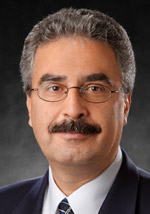
ARMIN ANSARI is the Radiological Assessment Team Lead at the Centers for Disease Control and Prevention (CDC) serving as subject matter expert in CDC’s radiation emergency preparedness and response activities. He received his BS and PhD degrees in radiation biophysics from the University of Kansas, starting his career as a radiation biologist, and did his postdoctoral research in radiation-induced mutagenesis at Oak Ridge and Los Alamos National Laboratories. He was a senior scientist with the radiological consulting firm of Auxier & Associates before joining CDC in 2002. He has led the development of key national guidance documents including guides for population monitoring and operation of public shelters after radiation emergencies and a number of training products for public health professionals. He is a past president of the Health Physics Society, adjunct associate professor of nuclear and radiological engineering at Georgia Institute of Technology, member of Georgia East Metro Medical Reserve Corps and Gwinnett County Community Emergency Response Team, and provides consultancy to the International Atomic Energy Agency. Since 2014, he has served as member of the U.S. delegation to the United Nations Scientific Committee on the Effects of Atomic Radiation. He is the author of Radiation Threats and Your Safety: A Guide to Preparation and Response for Professionals and Community, a book specifically directed at audiences without radiation protection expertise. 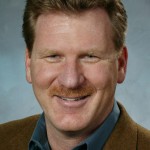
BROOKE R. BUDDEMEIER is an associate program leader in the Global Security Directorate of Lawrence Livermore National Laboratory (LLNL). He supports the Risk and Consequence Management Division in their efforts to evaluate the potential risk and consequence of radiological and nuclear terrorism. Mr. Buddemeier is a member of NCRP and served on the scientific committees which developed Commentary No. 19 - Key Elements of Preparing Emergency Responders for Nuclear and Radiological Terrorism (2005) and NCRP Report No. 165 – Responding to a Radiological or Nuclear Terrorism Incident: A Guide for Decision Makers (2010). From 2003 through 2007, he was on assignment with the Department of Homeland Security's as the weapons of mass destruction emergency response and consequence management program manager for Science and Technology's emergency preparedness and response portfolio. He supported Federal Emergency Management Agency and the Homeland Security Operations Center as a radiological emergency response subject matter expert. He also facilitated the department's research, development, test and evaluation process to improve emergency response through better capabilities, protocols and standards. Prior to that, he was part of the LLNL Nuclear Counterterrorism Program and coordinated LLNL's involvement in the National Nuclear Security Administration's Radiological Assistance Program (RAP) for California, Nevada and Hawaii. RAP is a national emergency response resource that assists federal, state and local authorities in the event of a radiological incident. As part of RAP's outreach efforts, Mr. Buddemeier has provided radiological responder training and instrumentation workshops to police, firefighters, and members of other agencies throughout the nation and abroad. He has also provided operational health physics support for various radiochemistry, plutonium handling, accelerator and dosimetry operations. He is Certified Health Physicist who received his Master's in Radiological Health Physics from San Jose State University and a BS in Nuclear Engineering from the University of California, Santa Barbara. |
|
| SC 3-2 | Recommendations for Instrument Response Verification and Calibration for Use in Radiation Emergencies |
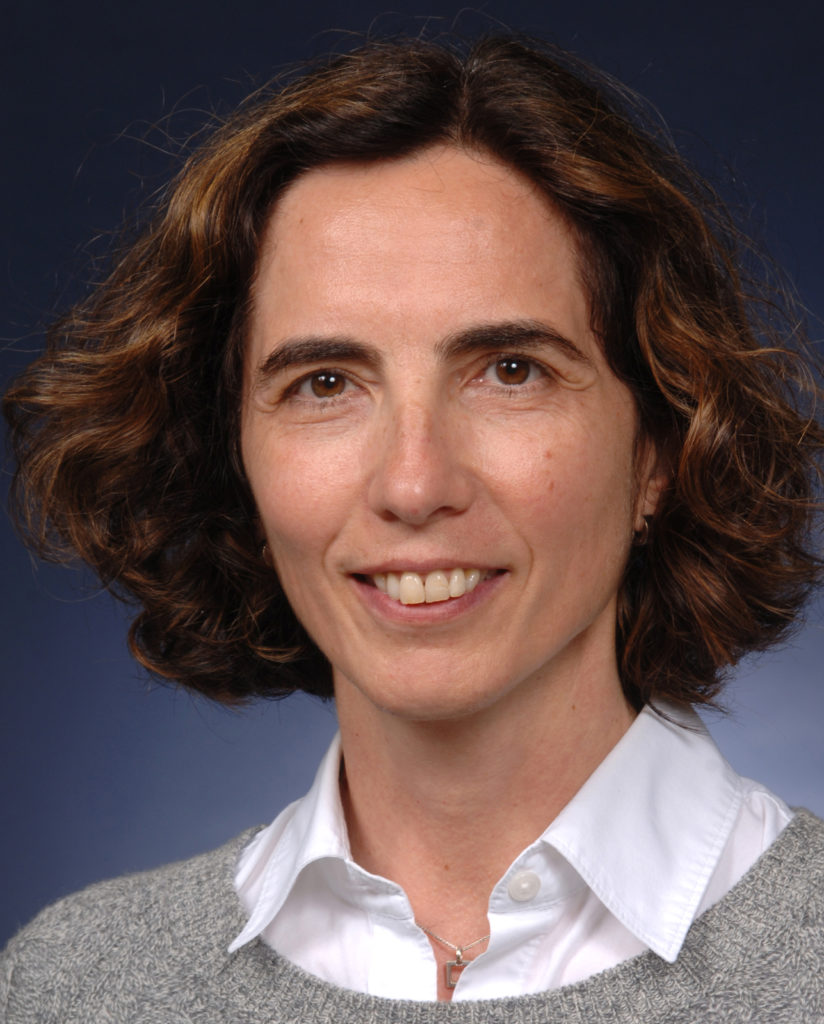 Leticia Pibida Leticia Pibida
Gladys A. Klemic
|
| PAC 4 | 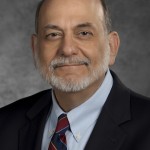
DONALD L. MILLER
Dr. Miller was elected to NCRP in 2006. He currently serves on the Board of Directors and as Chair of Program Area Committee 4 (Radiation Protection in Medicine). He is an author of NCRP Reports Nos. 168, 172, 177, 180, 184, and 185, and Statements Nos. 11 and 13. He served on the International Commission on Radiological Protection (ICRP) Committee 3 (Protection in Medicine) as a member from 2010 to 2013, and as Vice-Chair from 2013 to 2017. He is an author of ICRP Publications 117, 120, 135, and 139. He was Vice-Chair for the U.S. Environmental Protection Administration’s Federal Guidance Report No. 14, is a consultant to the International Atomic Energy Agency, and is a member of the World Health Organization’s Core Group of Experts on radiation protection of patients and staff. Dr. Miller was Professor of Radiology at the Uniformed Services University in Bethesda, Maryland from 1993 to 2012. He has served as Associate Editor of Radiology and the Journal of Vascular and Interventional Radiology and is an author of more than 200 papers in peer-reviewed journals and more than 40 book chapters and reports. He is a Fellow of the Society of Interventional Radiology (SIR) and the American College of Radiology (ACR), and an Honorary Member of both the American Association of Physicists in Medicine and the International Organization for Medical Physics. He chaired SIR’s Safety and Health Committee from 1999 to 2011 and the ACR Guidelines Interventional Committee from 2008 to 2012. His research interests have centered on radiation protection in medicine. 
LAWRENCE T. DAUER
is an Attending Physicist in the Departments of Medical Physics and Radiology at Memorial Sloan Kettering Cancer Center and serves at their Corporate Radiation Safety Officer. He serves as a member of the Nuclear and Radiation Studies Board of the National Academy of Sciences, Engineering and Medicine. He is a former Board member and current Council member of NCRP and is the Scientific Director of the Million Person Study. He has served as Chair or Co-Chair on several NCRP scientific committees associated with radiation protection of workers, patients, and members of the public. He served 7 y on the International Commission on Radiological Protection Committee 3, Radiation Protection in Medicine. |
|
| SC 4-10 | Error Prevention in Radiation Therapy | 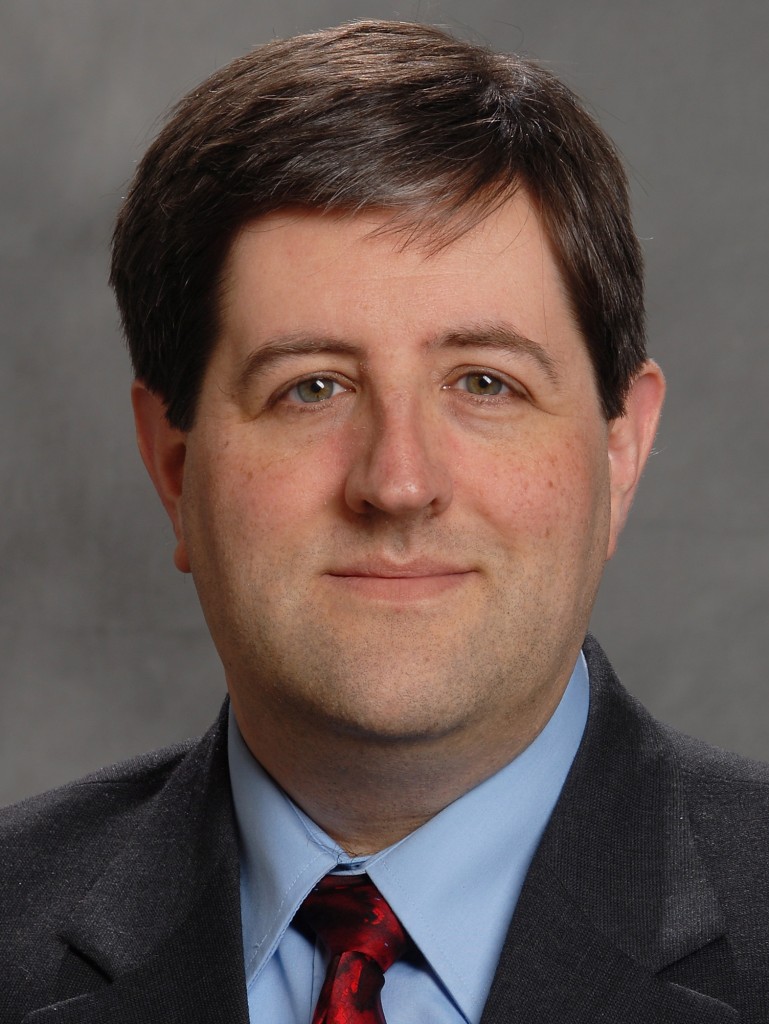
STEVEN G. SUTLIEF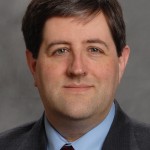 is currently a medical physicist with the Banner MD Anderson Cancer Center in Phoenix, Arizona and an adjunct professor at San Diego State University. He received his PhD in experimental particle physics from the University of Washington and subsequently completed a post-doctoral fellowship in radiation therapy medical physics at the University of Washington with research in intensity modulated radiation therapy. He has been chief medical physicist at the Veterans Affairs (VA) Puget Sound Health Care System in Seattle and an affiliate faculty member in the University of Washington School of Medicine, a professor at the University of California San Diego and a medical physicist with Landauer Medical Physics. Dr. Sutlief worked to advance radiation therapy within the VA, including agency-wide radiotherapy equipment modernization, radiotherapy device interconnectivity, consultation for the VA National Health Physics Program, participation in several investigations, and development of qualification standards for therapeutic medical physicists. He has coauthored more than 50 articles and book chapters related to therapeutic medical physics. Dr. Sutlief developed and taught the physics curriculum for the Bellevue College Medical Dosimetry program. He has served as a consultant to the International Atomic Energy Agency and as a member of the Radiation Oncology planning group for the Integrating the Healthcare Enterprise. Dr. Sutlief was a Co-organizer for the AAPM Summer School on Quality and Safety in Radiation Therapy and was a faculty member for the Veterans Health Administration Biennial Conference on Radiation Oncology. He actively participates in the American Association of Physicists in Medicine, where he has served on many committees and on several task group reports. He is currently an NCRP Council member. |
| PAC 5 | 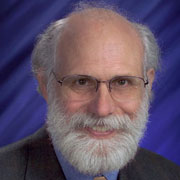
BRUCE A. NAPIER is a Staff Scientist in the Environmental Analysis and Engineering Group at Pacific Northwest National Laboratory in Richland, Washington and has been for the past 41 y. Mr. Napier works with the development and operation of models concerned with the environmental transport of radiological and chemical contaminants. His expertise and experience lie in the areas of radiation dose reconstruction, computer modeling, environmental analysis, and human health risk analysis. He is an author of the widely-used GENII computer code. Mr. Napier was the Chief Scientist for the Hanford Environmental Dose Reconstruction Project that evaluated releases from the Hanford Site during production of plutonium. He is now a Principal Investigator for the U.S./Russian Joint Coordinating Committee on Radiation Effects Research, working on the dose reconstructions at the Russian Mayak Production Association for both the workers at and the populations living near the points of atmospheric release and along the Techa River downstream. Mr. Napier is a Scientific Vice President and past member of the Board of Directors of NCRP, a past committee member of the U.S. Environmental Protection Agency's Science Advisory Board and the National Academy of Sciences, a Fellow of the Health Physics Society, and past Chair of oversight panels for the National Cancer Institute's Chernobyl Studies. |
|
| PAC 6 | 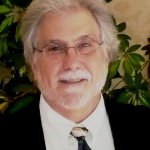
STEVEN L. SIMON received a BS in Physics from the University of Texas, an MS in Radiological Physics from the University of Texas Health Sciences Center in Dallas, and a PhD in Radiological Health Sciences from Colorado State University. Early in his career, he worked in medical physics and was the first treatment planner for clinical trials of treatments of solid tumors with negative pi-mesons at the Los Alamos Physics Meson Facility. Later specializing in environmental radioactivity and assessment, he directed the first and only nationwide monitoring program of the Marshall Islands for residual contamination from nuclear testing. He also participated in the radiological monitoring of numerous other nuclear test sites worldwide including Johnston Island, French Polynesia, and Algeria and has lead, or participated in, radiation health risk studies of fallout exposures in Utah, the Marshall Islands, and Kazakhstan. In 2000, Dr. Simon joined the National Cancer Institute's (NCI) Radiation Epidemiology Branch as an expert in dose reconstruction and led the Dosimetry Unit in that Branch for more than 6 y. His research program included methods for reconstructing historical doses, particularly to medical workers, atomic veterans, persons exposed to radioactive fallout in the Marshall Islands and in the United States – particularly in Utah and in New Mexico, and in the development of methods for characterizing uncertainties of estimated doses and using those uncertainties in radiation risk analyses. He led the first and only assessment of exposures from the world’s first nuclear test, TRINITY, as well as the development of a complete suite of methods for assessing doses from nuclear fallout. He retired from the NCI in 2022. Dr. Simon has been a member of NCRP since 2006 and the Chair of Program Area 6 – Radiation Measurements and Dosimetry since 2013. He was an Associate Editor of Health Physics for 25 y and, in 2021, was awarded the Distinguished Scientific Achievement Award by the Health Physics Society. In 2011 during the Fukushima nuclear crisis, he was deployed by the U.S. Department of Health and Human Services to the U.S. Embassy in Japan to assist with the protection of American citizens. He was on assignment in 2016 to the International Agency for Research on Cancer (Lyon, France) to develop methods for assessing doses and uncertainties to a study cohort of one million children exposed to radiation from computed tomography exams. In recent years, he has been a consultant to the United Nations Scientific Committee on the Effects of Atomic Radiation for occupational exposures. |
|
| SC 6-11 | Dosimetry Guidance for Medical Radiation Workers With a Focus on Lung Dose Reconstruction | 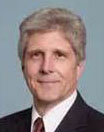
R. CRAIG YODER directed Landauer's technical activities relating to radiation dosimetry, particularly for applications in radiation protection from 1983 through his retirement in 2015. Additionally, he oversaw subsidiary and partner businesses located in Australia, Brazil, China, France, Mexico, Japan, Sweden and Turkey. An internationally known expert in radiation monitoring, Dr. Yoder led Landauer's transition from film and thermoluminescent dosimetry technology to optically stimulated luminescence, an assignment that required strategic planning and direction in areas spanning scientific research, product development, manufacturing, laboratory operations and marketing. From 1993 to 2001, he was Vice President of Operations and managed Landauer's manufacturing and analytical laboratory activities in addition to overseeing research and development programs. Dr. Yoder is a member of NCRP and former President of the Council on Ionizing Radiation Measurements and Standards. He has served on several national and international committees to develop dosimetry standards. He was a member of a National Research Council committee that examined the accuracy of film badge measurements made during atmospheric nuclear weapons testing. Dr. Yoder earned his MS and PhD degrees in Bionucleonics at Purdue University and received a BS in Pre-Medicine from Davidson College. He also completed the Executive Program at Stanford University. He is Certified in Comprehensive Health Physics by the American Board of Health Physics. 
LAWRENCE T. DAUER
is an Attending Physicist in the Departments of Medical Physics and Radiology at Memorial Sloan Kettering Cancer Center and serves at their Corporate Radiation Safety Officer. He serves as a member of the Nuclear and Radiation Studies Board of the National Academy of Sciences, Engineering and Medicine. He is a former Board member and current Council member of NCRP and is the Scientific Director of the Million Person Study. He has served as Chair or Co-Chair on several NCRP scientific committees associated with radiation protection of workers, patients, and members of the public. He served 7 y on the International Commission on Radiological Protection Committee 3, Radiation Protection in Medicine. |
| SC 6-12 | Development of Models for Brain Dosimetry for Internally Deposited Radionuclides | 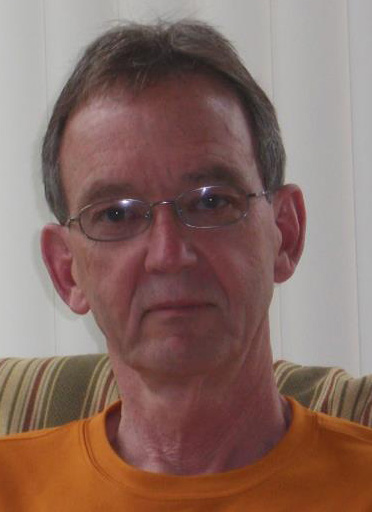
Richard Leggett

Sergei Y. Tolmachev
|
| SC 6-13 | Methods and Models for Estimating Organ Doses from Intakes of Radium | 
Derek W. Jokisch
is Professor of Physics and Chair of the Department of Physics and Engineering at Francis Marion University. He also holds a Joint Faculty Appointment in the Center for Radiation Protection Knowledge at Oak Ridge National Laboratory. He earned his BS in Nuclear Engineering from the University of Illinois at Urbana-Champaign in 1995. He earned his MS and PhD in Nuclear Engineering Sciences (Health Physics) at the University of Florida in 1997 and 1999, respectively, while supported by a U.S. Department of Energy (DOE) Nuclear Energy/Health Physics Fellowship. Dr. Jokisch serves as a member of Committee 2 of the International Commission on Radiological Protection and as a member of the U.S. Scientific Review Group for the DOE’s Russian Health Studies Program. The Health Physics Society awarded him the Elda E. Anderson Award in 2010 and Francis Marion University awarded him the J. Lorin Mason Distinguished Professor Award in 2011. Dr. Jokisch’s research has involved multiple aspects of internal dosimetry, including energy deposition of charged particles in the skeleton, the computation of specific absorbed fractions for reference individuals, the calculation of internal dose coefficients, and the biokinetics of radioactive decay chains. 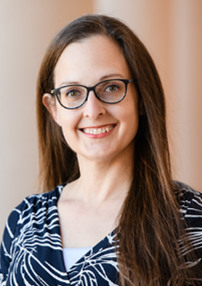
Nicole Martinez
is an Associate Professor in the Department of Environmental Engineering and Earth Sciences at Clemson University in the United States. She also holds a Joint Faculty Appointment at Oak Ridge National Laboratory within the Center for Radiation Protection Knowledge.
She graduated from Texas A&M University with a BS degree in applied mathematical sciences, and thereafter became an officer in the US Navy where she was a nuclear power instructor and later a radiation health officer. Followed by a brief stint working in industry, Dr. Martinez attended graduate school at Colorado State University, where she received an MS and PhD in radiological health sciences, with emphasis in health physics and radioecology, respectively. While working on her doctorate, she spent about a year and a half as part of a research team at Savannah River National Laboratory.
Dr. Martinez’s current research focuses on dosimetric modeling and the behavior and effects of radiological contaminants in the environment. In addition, she is interested in non-technical issues within radiation protection, such as ethics and diversity, equity, and inclusion. She is currently serving as Vice-Chair of Committee 4 of the International Commission of Radiological Protection and is the Secretary of the Health Physics Society for the 2021-2023 term. She is the recipient of the 2018 Bo Lindell Medal from the ICRP, the 2019 Elda Anderson Award from the HPS, and is a Certified Health Physicist. |
| PAC 7 | Radiation Education, Risk Communication, and Outreach | 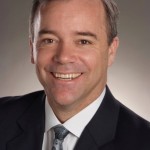
Randall N. Hyer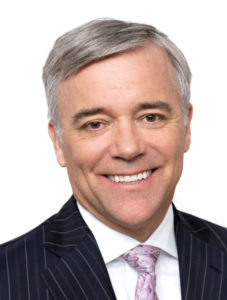
has over three decades’ experience in high-concern, low-trust public communications. He advises the National Academy of Sciences, Engineering and Medicine, lectures at Harvard University, and advises/educates both individuals and organizations on how to implement best practices in risk and crisis communication. His diverse experience covers disease outbreaks, nuclear emergencies, natural disasters, outbreak investigations, product safety concerns, reorganizations and downsizing, budget cuts, rogue employee mitigations, health hazard evaluations, and strategic communications. As the Senior Vice President for Global Medical at Moderna, Dr. Hyer helped develop, communicate, and manage the global rollout of the Moderna COVID-19 mRNA vaccine. In 2017, he was pivotal in engaging the scientific, medical and policy communities to achieve Food and Drug Administration approval of a new adult hepatitis B vaccine (HEPLISAV-B®), the first vaccine using a truly novel adjuvant. Board-certified in general preventive medicine and public health, Dr. Hyer earned his MD from Duke and trained at Walter Reed Hospital and Harvard. He received the PhD from the University of Oxford researching the genetics of juvenile diabetes. His studies won the National Institutes of Health "Outstanding Research Award for Clinical Trainees" and are widely cited. At Oxford University, Dr. Hyer founded the biotechnology company, Alpha-Plus DNA. He also served as a U.S. Congressional Fellow for Senator Pete V. Domenici (R. -NM). Dr. Hyer helped introduce legislation to safeguard genetic privacy that eventually became the Genetic Information Non-discrimination Act (GINA) of 2008. Dr. Hyer graduated with Distinction from the U.S. Naval Academy. Rising to the rank of Commander, his naval service included four major military combat operations in Europe and southwest Asia as well as three major complex humanitarian emergencies with Kosovo relief, Mozambique flood relief, and the Indian Ocean tsunami. Dr. Hyer also served as the Winter-Over Medical Officer at the McMurdo and South Pole Stations, Antarctica as the sole physician. At the World Health Organization (WHO) in Geneva, Dr. Hyer served as a Medical Officer and Military Liaison. Among other duties, he helped facilitated the WHO response to various crisis such as anthrax, Ebola, the 2003 SARS outbreak, tsunamis, earthquakes, and pandemic influenza. Dr. Hyer’s perspectives and contributions span his residing in eight and travelling to 100 plus countries in diverse roles across the public and private sectors. |
Responsible for each area is a committee chaired by a Scientific Vice President. These scientific program area committees are charged with evaluating the need for new NCRP work in the area and formulating their recommendations on the scope of the proposed new work and individuals who might be considered to chair any new report-writing committee that is constituted. These recommendations are submitted to the Board of Directors for action.
When the Board concludes that a new report-writing committee should be commissioned, the work begins with the selection of a committee chair, approval of committee membership based on consultation with the chair, and concurrence with the proposed scope of work prepared by the scientific program area committee and/or the chair.
Committee size varies considerably depending upon the subject area and the complexity of the undertaking. The usual size of scientific committees is 6 to 10 members.
A technical member of the NCRP Secretariat staff is assigned to work with and for each scientific committee. Committees also have access to consultants and advisors should these be needed in developing their work.
Following establishment of a scientific report-writing committee, it proceeds with its work which has as its endpoint the publication of a scientific report. This process often requires considerable effort with the time needed to complete a draft report varying appreciably from committee to committee.
The review process for draft reports is elaborate and comprehensive. It includes, first, review by a selected group of “critical reviewers.” Second, following modification on the basis of the comments of the critical reviewers, the report is submitted to the full Council membership and the organizations participating in the review process. Further modification on the basis of the comments received follows, with the goal of reaching an essentially unanimous acceptance of the material included in the report.
Scientific report-writing committees usually move into inactive status when they have completed their assigned tasks. This occasion is subsequent to publication of the pertinent scientific report. This retains, for a limited time, a source of advice and interpretation of published materials. Subsequently, a committee is usually disbanded.
Appointments to the membership of a scientific program area committee are governed by the following policy.
Scientific program area committee appointments, including those of chairmen, shall be considered to have been made at the time of the Board of Director’s meeting following the annual meeting which is closest to the time of actual appointment. Initial appointments to these standing scientific committees shall be for periods of two, four or six years, with the terms of approximately one-third of the membership expiring every two years. The chairman of the committee shall propose individuals for appointment and identify those proposed for initial two-year appointments, those proposed for initial four-year appointments and those proposed for initial six-year appointments. Subsequent appointments shall be for a period of six years. Retiring members may be proposed for reappointment. Proposed appointments (with biographical information) shall be submitted to the Executive Director prior to the Board of Directors’ meeting at which action on the proposed appointments is to be taken.




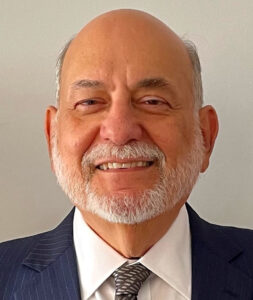 is the Chief Medical Officer for the Office of Radiological Health at the Food and Drug Administration’s (FDA) Center for Devices and Radiological Health. He earned a BA from Yale University and an MD from New York University, and completed a residency in diagnostic radiology and a fellowship in interventional radiology at New York University Medical Center. He is board certified in Diagnostic Radiology and Vascular and Interventional Radiology. Prior to joining FDA, he practiced interventional radiology for three decades at the National Institutes of Health and the National Naval Medical Center in Bethesda, Maryland.
is the Chief Medical Officer for the Office of Radiological Health at the Food and Drug Administration’s (FDA) Center for Devices and Radiological Health. He earned a BA from Yale University and an MD from New York University, and completed a residency in diagnostic radiology and a fellowship in interventional radiology at New York University Medical Center. He is board certified in Diagnostic Radiology and Vascular and Interventional Radiology. Prior to joining FDA, he practiced interventional radiology for three decades at the National Institutes of Health and the National Naval Medical Center in Bethesda, Maryland. 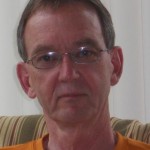 is a research scientist in the Environmental Sciences Division at Oak Ridge National Laboratory (ORNL). He received his PhD in mathematics from the University of Kentucky in 1972 and taught mathematics at the Ruhr University in Bochum, Germany, and the University of Tennessee before joining the Health Physics Division at ORNL in 1976. His main research interest is in physiological systems modeling, with primary applications to the biokinetics and dosimetry of radionuclides and radiation risk analysis. He is a member of Committee 2 of the International Commission on Radiological Protection (ICRP) and the ICRP Task Group on Internal Dosimetry. His physiological systems models of the human circulation, skeleton, and gastrointestinal transfer and his systemic biokinetic models for a number of elements are used by ICRP as dosimetry and bioassay models. He is the author of ICRP Publication 70, Basic Anatomical and Physiological Data for Use in Radiological Protection: The Skeleton and co-author of a number of other ICRP reports including the series of documents on doses to members of the public from intake of radionuclides (1989 to 1996), the updated Reference Man document (2002), and the Human Alimentary Tract Model (2006). He has authored over 100 open literature publications and in 1995 was named ORNL Author of the Year for the paper, “An Age-Specific Kinetic Model of Pb Metabolism in Humans.”
is a research scientist in the Environmental Sciences Division at Oak Ridge National Laboratory (ORNL). He received his PhD in mathematics from the University of Kentucky in 1972 and taught mathematics at the Ruhr University in Bochum, Germany, and the University of Tennessee before joining the Health Physics Division at ORNL in 1976. His main research interest is in physiological systems modeling, with primary applications to the biokinetics and dosimetry of radionuclides and radiation risk analysis. He is a member of Committee 2 of the International Commission on Radiological Protection (ICRP) and the ICRP Task Group on Internal Dosimetry. His physiological systems models of the human circulation, skeleton, and gastrointestinal transfer and his systemic biokinetic models for a number of elements are used by ICRP as dosimetry and bioassay models. He is the author of ICRP Publication 70, Basic Anatomical and Physiological Data for Use in Radiological Protection: The Skeleton and co-author of a number of other ICRP reports including the series of documents on doses to members of the public from intake of radionuclides (1989 to 1996), the updated Reference Man document (2002), and the Human Alimentary Tract Model (2006). He has authored over 100 open literature publications and in 1995 was named ORNL Author of the Year for the paper, “An Age-Specific Kinetic Model of Pb Metabolism in Humans.” is a Research Professor in the College of Pharmacy and Pharmaceutical Sciences, Washington State University, and the Director of the United States Transuranium and Uranium Registries. He earned his Diploma (MSc equivalent) in Nuclear Chemical Engineering (Radiochemistry) from the Mendeleev University of Chemical Technology of Russia (Moscow) in 1993. While supported by a scholarship from the Ministry of Education, Culture, and Sport of Japan, he earned the degree of Doctor of Science (PhD equivalent) from Kyushu University (Fukuoka) in 2001. Dr. Tolmachev’s research interests have involved the fields of environmental radioecology, radiochemistry, nuclear analytical techniques, mass spectrometric measurements, internal dosimetry, and biokinetic modeling. Dr. Tolmachev has been a member of NCRP since 2020. He served as a chair of radiochemistry team of the Council Committee 2 (2017 to 2022) and a vice-chair of the Scientific Committee 6-12 (2018 to 2022) on brain dosimetry. Dr. Tolmachev serves on the U.S. Scientific Review Group for the U.S. Department of Energy’s Russian Health Studies Program and is a member of the Board of Trustees of the Herbert M. Parker Foundation. Internationally, Dr. Tolmachev is a member of the European Radiation Dosimetry Group (EURADOS) Working Group 7 on Internal Dosimetry and serves on the Editorial Board of the Japanese Journal of Health Physics.
is a Research Professor in the College of Pharmacy and Pharmaceutical Sciences, Washington State University, and the Director of the United States Transuranium and Uranium Registries. He earned his Diploma (MSc equivalent) in Nuclear Chemical Engineering (Radiochemistry) from the Mendeleev University of Chemical Technology of Russia (Moscow) in 1993. While supported by a scholarship from the Ministry of Education, Culture, and Sport of Japan, he earned the degree of Doctor of Science (PhD equivalent) from Kyushu University (Fukuoka) in 2001. Dr. Tolmachev’s research interests have involved the fields of environmental radioecology, radiochemistry, nuclear analytical techniques, mass spectrometric measurements, internal dosimetry, and biokinetic modeling. Dr. Tolmachev has been a member of NCRP since 2020. He served as a chair of radiochemistry team of the Council Committee 2 (2017 to 2022) and a vice-chair of the Scientific Committee 6-12 (2018 to 2022) on brain dosimetry. Dr. Tolmachev serves on the U.S. Scientific Review Group for the U.S. Department of Energy’s Russian Health Studies Program and is a member of the Board of Trustees of the Herbert M. Parker Foundation. Internationally, Dr. Tolmachev is a member of the European Radiation Dosimetry Group (EURADOS) Working Group 7 on Internal Dosimetry and serves on the Editorial Board of the Japanese Journal of Health Physics. News & Events
News & Events